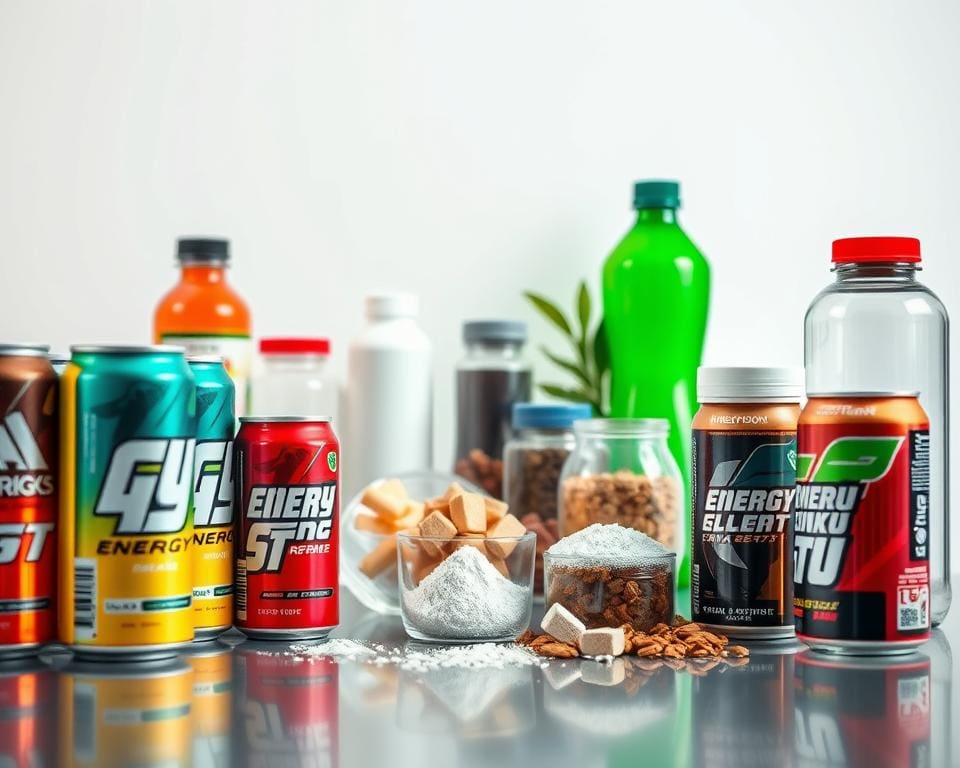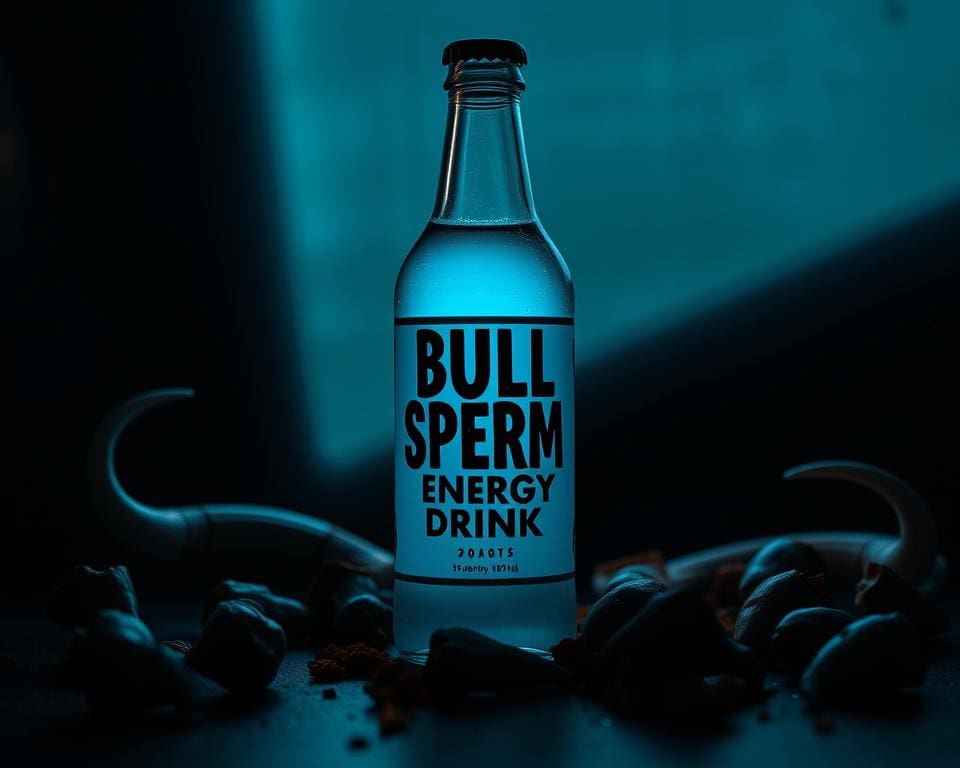The world of energy drinks is often shrouded in mystery, leading to various misconceptions, including the infamous energy drinks myth regarding bull sperm. This provocative claim has sparked curiosity and debate among consumers. Are Energy Drinks Made Of Bull Sperm? This question not only ignites intrigue but also calls for an in-depth exploration of the ingredients that power these popular beverages. In this article, we will unravel the truth behind the bull sperm energy drinks myth and unveil what really goes into these energising concoctions.
Understanding Energy Drinks: What Are They?
Energy drinks have carved a niche in modern society, becoming ubiquitous in various social settings. The foundation of understanding energy drinks involves exploring their origins and the diverse formulations that define them. This exploration can enlighten consumers about the potential benefits and drawbacks associated with these beverages.
The Origin of Energy Drinks
The history of energy drinks dates back to the 1960s. Pioneering brands such as Red Bull emerged during this period, setting the stage for a burgeoning industry. Early formulations primarily aimed to provide a quick boost in alertness and endurance, a promise that has since evolved with increased consumer demands.
Popular Brands and Their Ingredients
The market features various brands, each presenting distinct energy drinks ingredients tailored to different preferences. Popular options include Monster, Rockstar, and Lucozade, each with their unique formulations. Key components such as caffeine and sugar form the backbone of these beverages, delivering the much-needed energy boost for consumers seeking vitality in their daily routines.

Are Energy Drinks Made Of Bull Sperm?
The claim that energy drinks contain bull sperm has circulated widely, creating confusion among consumers. This bull sperm myth likely arises from misunderstandings about the ingredients used in many popular energy drinks. A closer examination reveals the truth behind these misconceptions.
Examining the Myth
At the heart of the bull sperm myth lies a misconception about taurine, an ingredient commonly found in energy drinks. Many believe it is derived from animal sources, which fuels the idea that energy drinks might contain bull sperm. In reality, taurine is synthesised in laboratories and does not originate from any animal product. This deliberate misrepresentation has misled countless individuals, reinforcing the stigma surrounding energy drinks.
Clarifying Common Misconceptions
Unpacking energy drinks misconceptions is essential for responsible consumption. Energy drinks are often blamed for various health risks without a detailed understanding of their components. It is crucial to differentiate between ingredients like caffeine, which provides the desired energy boost, and taurine.
- Myth: Energy drinks contain bull sperm.
- Fact: Taurine is synthetically produced and not sourced from animals.
- Myth: All energy drinks are unhealthy.
- Fact: Many brands offer sugar-free or low-calorie options.
Addressing these incorrect beliefs can lead to a more informed approach towards energy drink consumption, allowing individuals to make choices based on facts rather than unfounded myths.
Energy Drinks Ingredients: What’s Really Inside?
The world of energy drinks is vast, filled with a variety of flavours and promises of vitality. Understanding the energy drinks ingredients is crucial for consumers wishing to make informed choices. A key component in these beverages is caffeine, which plays a significant role in providing that much-desired boost. Additionally, many energy drinks incorporate sugar and taurine, contributing to their overall effectiveness and appeal. Exploring these elements leads to a better understanding of what truly lies within every can.
Caffeine, Sugar, and Other Common Components
Caffeine in energy drinks serves as a primary stimulant, mimicking the effects of adrenaline in the body. It enhances alertness, enabling individuals to tackle their tasks with increased focus. On average, an energy drink can contain about 80mg to 300mg of caffeine per serving, which varies by brand. Coupled with caffeine, sugar emerges as another prevalent ingredient. It not only sweetens the drink but also provides a quick source of energy, often leading to a short-lived spike in productivity.
The Role of Taurine in Energy Drinks
Taurine, an amino acid found naturally in the body, plays a somewhat spurious role in the composition of energy drinks. Often included as an ingredient, taurine is thought to enhance physical performance and support cardiovascular health. While not a stimulant, it may work synergistically with caffeine to improve endurance and mental clarity. This combination raises consumer interest, prompting questions about the impact of taurine on energy drink efficacy.
Truth About Energy Drink Ingredients: The Facts
The landscape of energy drink ingredients varies significantly, encompassing a mix of both natural and synthetic components. Understanding the intricacies of these ingredients is crucial for consumers seeking to make informed choices. The truth about energy drink ingredients often leads to conversations around the safety, efficacy, and sourcing of these components.
Natural vs. Synthetic Ingredients
When evaluating energy drinks, one of the primary distinctions rests between natural and synthetic elements. Natural ingredients, such as caffeine derived from coffee beans or tea leaves, have long been championed for their health benefits. These components are often perceived as safer and more beneficial due to their traditional use in various cultures.
Synthetic ingredients, on the other hand, raise questions regarding their safety and long-term effects. Many common additives, such as certain sweeteners and preservatives, are produced in laboratories and can trigger concerns among consumers. Understanding the balance of natural vs. synthetic ingredients in a product will allow individuals to consider what aligns best with their health values.
Regulatory Standards in the UK
The UK energy drink regulations play a pivotal role in ensuring that consumers receive safe products. The Food Standards Agency enforces guidelines that manufacturers must adhere to, including limits on caffeine content and specific labelling requirements. These regulations promote transparency, making it easier for consumers to discern what is within their favourite beverages. Awareness of these standards empowers individuals to feel more secure in their consumption, knowing that the products have undergone rigorous scrutiny.
Energy Drink Myths: Debunking the Rumours
Energy drinks have garnered substantial attention, leading to various misconceptions regarding their safety and effects on health. Debunking energy drink myths is essential for understanding their true nature and ensuring informed consumption choices. Many reports suggest that the safety of energy drinks depends on factors like moderate consumption and individual health conditions.
Are They Safe for Consumption?
The safety of energy drinks often comes into question due to concerns around their caffeine and sugar content. Regulatory bodies, such as the European Food Safety Authority (EFSA), have established that moderate consumption of these drinks poses minimal risk for healthy adults. Studies indicate that typical consumption levels, within recommended guidelines, are unlikely to cause serious health issues. Nonetheless, individuals with pre-existing conditions should approach them with caution, as heightened sensitivity can lead to adverse effects.
Other Misleading Myths Explained
Several myths surrounding energy drinks warrant clarification. For instance, one prevalent myth suggests that these beverages are primarily for athletes or fitness enthusiasts. This notion overlooks the variety of consumers who enjoy energy drinks, including those needing a boost during long work shifts or studying late at night. Additionally, some believe that all energy drinks are harmful. In reality, brands vary widely in their formulations. Understanding these differences plays a crucial role in debunking energy drink myths.
Energy Drink Facts: What You Should Know
Understanding energy drink facts is essential for making informed choices. In recent years, consumption trends have shown a significant rise in energy drink popularity, especially among younger demographics. Insights into these trends reveal not only who is consuming these beverages but also the reasons behind their choices.
Statistics on Consumption Trends
Recent statistics illustrate that energy drinks are consumed by a wide range of age groups. An impressive proportion of consumers falls within the 18 to 34 age bracket. Many individuals opt for these drinks to enhance performance during physical activities or to combat fatigue. According to various studies, approximately 30% of university students regularly consume energy drinks. Interestingly, the appeal extends beyond students, with many working professionals viewing these beverages as a quick pick-me-up during long hours.
Impact on Health and Well-being
The health impact of energy drinks remains a point of contention. Some individuals report increased alertness and improved cognitive function after consumption, attributing these benefits to caffeine and other stimulants found in these drinks. Despite these potential advantages, there are concerns regarding excessive consumption, which can lead to negative health effects such as insomnia, increased heart rate, and anxiety. Awareness of the balance between benefits and risks is vital for those incorporating energy drinks into their daily routines.
Energy Drink Production Process: How Are They Made?
The energy drink production process serves as a vital journey from initial concept to the final product. Understanding this journey provides insights into how these invigorating beverages reach consumers. Each stage is essential, from sourcing ingredients to formulating unique blends and finally bottling the drink for retailers’ shelves.
From Concept to Shelf: The Journey of an Energy Drink
Manufacturing of energy drinks begins with a clear concept. Brands often start by identifying the target market and the specific benefits their product will provide. This leads to ingredient sourcing, where companies choose high-quality raw materials, ensuring they align with the drink’s intended effects. Formulation follows, involving the careful blending of flavours and functional ingredients, creating a harmonious drink capable of energising consumers.
Quality Control in Production
Quality control plays a critical role throughout the energy drink production process. Rigorous testing at various stages ensures that the drinks not only meet safety standards but also provide consistent flavour and efficacy. From testing individual ingredients to evaluating the final product, quality control measures are in place to guarantee that consumers receive a safe and enjoyable beverage. Such diligence ensures that manufacturers maintain their reputations and customers’ trust.
Energy Drink Health Risks: What Are the Dangers?
As energy drinks continue to gain popularity, it’s crucial to comprehend the potential health risks associated with their consumption. While many enjoy the boost of energy these beverages provide, excessive intake can lead to significant health concerns. Studies have indicated that frequent consumers may experience heightened anxiety, heart palpitations, and even symptoms of dependency. The caffeine content in energy drinks is often much higher than that found in standard soft drinks, increasing the risk of adverse effects.
Experts warn that the dangers of energy drinks can extend beyond immediate effects. Long-term consumption may contribute to serious health complications, including cardiovascular issues and metabolic disturbances. As indicated in various health reports, the energy drink health risks are particularly pronounced among younger individuals who may not fully understand the implications of their consumption. Educating consumers about these risks is essential for fostering responsible drinking habits.
Emphasising moderation is key to enjoying the benefits of energy drinks while mitigating potential health risks. Understanding the fine line between safe consumption and the dangers of energy drinks can empower individuals to make informed choices. Awareness of these health concerns is crucial not only for personal well-being but also for encouraging a more comprehensive dialogue about energy drink safety in the community.









